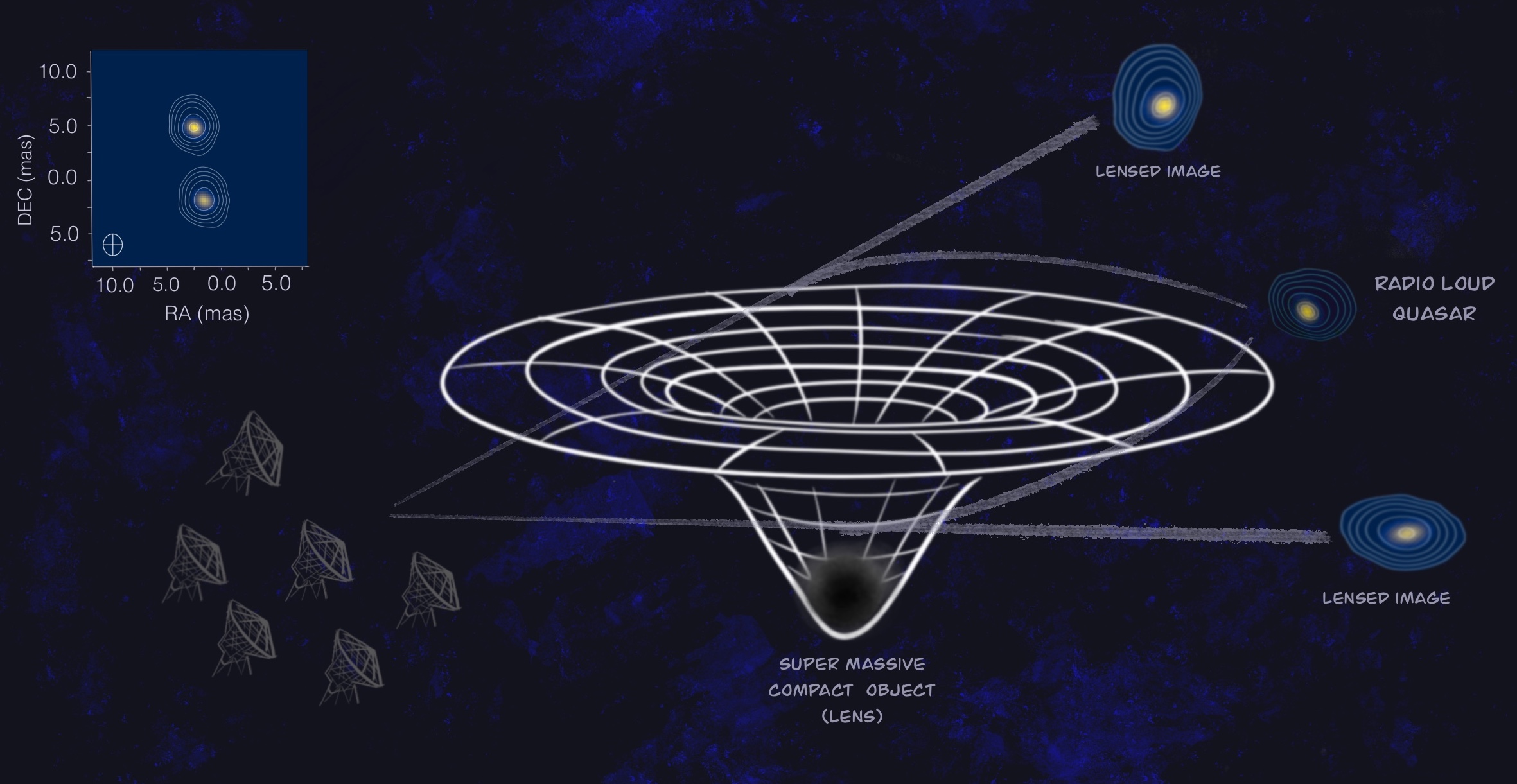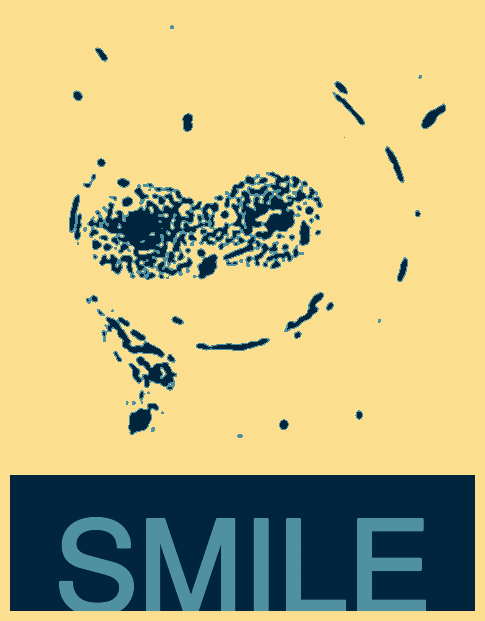Search for Milli-Lenses
With the SMILE project we propose to search for gravitational lens systems on milli-arcsecond scales, i.e. milli-lenses, using a large (~5000 sources) and complete sample of radio loud active galaxies and high resolution Very Long Baseline Interferometry (VLBI) data.
Gravitational lensed images with angular separation on milliarcsecond scales probe gravitational lens systems where the lens is a supermassive compact object, i.e a compact object with mass in the range 10⁶ - 10⁹ M☉. This mass range is particularly critical for the widely accepted Λ Cold Dark Matter (ΛCDM) model, which predicts many more dark matter (DM) halos at sub-galactic scales (≲10¹¹ M☉), than currently observed.

Since the number of DM sub-galactic halos that can be detected through milli-lenses depends both on the mass function and the density profiles of DM halos, with the SMILE project we will be able to discriminate between many currently viable DM models.
Milli-lensing is not only sensitive to DM halos at sub-galactic scales, but also at i) primordial black holes, also considered an alternative candidate to DM particles, and ii) supermassive black holes hosted by galaxies.
In Casadio et al., 2021, MNRAS, 507, L6 we presented a pilot search for milli-lenses with angular separation smaller than 150 milli-arcseconds, using the publicly available multi-frequency VLBI data in the Astrogeo VLBI FITS image database. We identified 40 new milli-lens candidates, and obtained new follow-up observations with the European VLBI Network (EVN).
In order to reach our goal, we will develop advanced and automatized VLBI data reduction techniques and we will deliver to the community high-quality VLBI images of an unprecedented number of sources.
Sources that will be finally rejected as milli-lens systems can still be investigated as binary supermassive black holes or compact symmetric objects candidates. In both cases, we are talking about intriguing and poorly understood objects, which will deserve dedicated studies and publications.
